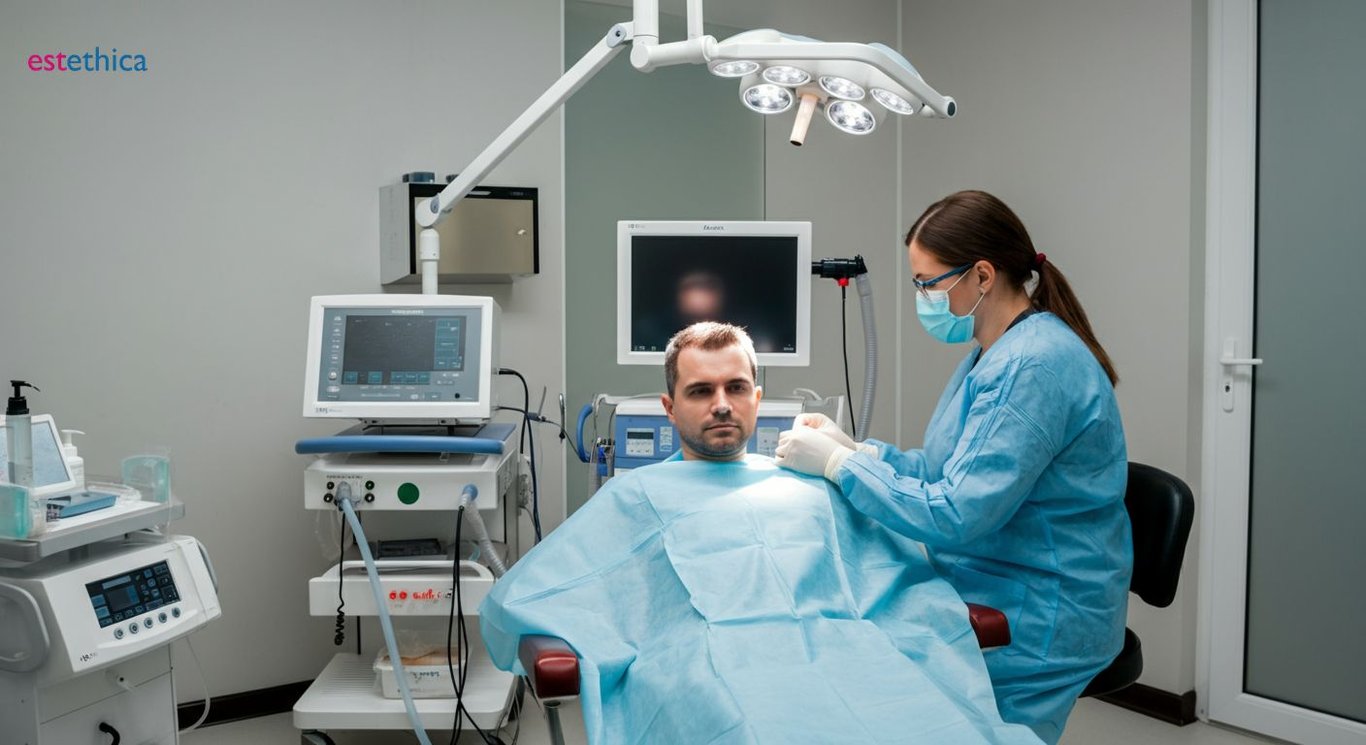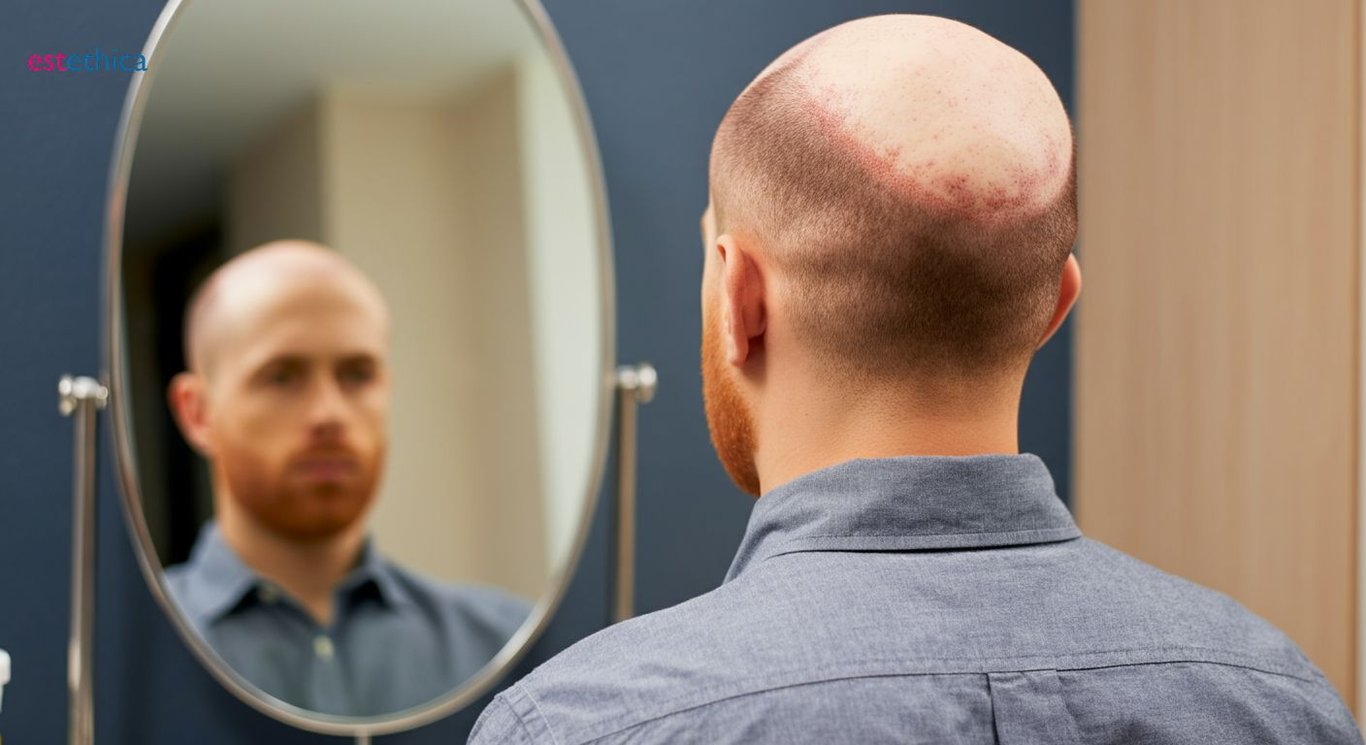Mastering Hair Transplantation: Your Comprehensive Guide to Success
Discover the transformative power of hair transplantation. Understand the procedures, select top surgeons, and achieve lasting results.
Hair transplantation has emerged as a revolutionary solution for those experiencing hair loss. This procedure not only restores hair but also boosts confidence. Understanding the intricacies of hair transplantation can provide clarity for those considering this transformative procedure. In this comprehensive guide, we delve into the essentials of hair transplantation, its working mechanism, and post-procedure care for ensuring successful restoration.
Understanding the Basics: What is a Hair Transplant?
Key Features of Hair Transplant Techniques
- Follicular Unit Extraction (FUE) offers a minimally invasive approach with natural results.
- Direct Hair Implantation (DHI) allows precise placement of hair follicles for optimal density.
- Advanced technology ensures reduced recovery time and enhanced hair growth.
Hair transplant surgery has evolved significantly, offering various techniques to cater to individual needs. FUE, for instance, is favored for its minimally invasive nature, allowing patients to achieve a natural look without significant downtime. DHI, on the other hand, provides precision in follicle placement, ensuring optimal hair density and coverage. These advancements have made hair restoration more accessible and effective, with technology playing a crucial role in reducing recovery time and enhancing hair growth outcomes.
Steps Involved in Hair Transplant Surgery
- Consultation and assessment to determine the best approach for the patient.
- Extraction of hair follicles from the donor site using advanced techniques.
- Implantation of follicles into the recipient site for natural hair growth.
The process begins with a thorough consultation to assess the patient's hair loss pattern and determine the most suitable technique. Once the approach is decided, hair follicles are carefully extracted from the donor site, typically the back of the scalp, using advanced methods like FUE. These follicles are then meticulously implanted into the balding areas, ensuring a natural hairline and growth pattern. This structured approach not only enhances the aesthetic outcome but also boosts patient confidence.

How Does Hair Transplant Work? A Step-by-Step Guide
Innovative Techniques in Hair Transplantation
Hair transplant surgery has evolved with innovative techniques that enhance both efficiency and results. One such method is Follicular Unit Extraction (FUE), which involves extracting individual hair follicles from the donor area. This minimally invasive approach ensures a natural appearance and reduces recovery time. Additionally, the Multi-Implanter method allows for simultaneous channel opening and graft placement, streamlining the process and improving outcomes.
- FUE minimizes scarring and offers a quicker recovery.
- The Multi-Implanter method increases efficiency by combining steps.
- Advanced techniques ensure a more natural hairline and density.
These advancements in hair restoration techniques have made the procedure more accessible and effective, catering to individual needs and preferences.
Step-by-Step Process of Hair Transplantation
- Preparation of the donor area for follicle extraction.
- Extraction and preparation of individual hair follicles.
- Implantation of follicles into the recipient area.
The process begins with preparing the donor area, typically the back of the scalp, where hair follicles are harvested. Using methods like FUE, individual follicles are extracted and prepared for transplantation. The recipient area is then prepared by creating small slits or holes, where the extracted follicles are carefully implanted. This meticulous approach ensures a natural-looking result, enhancing both the aesthetic appeal and the patient's confidence.

Choosing the Right Surgeon: Key Factors to Consider
Evaluating Surgeon Credentials and Experience
When selecting a surgeon for hair transplant surgery, it's crucial to evaluate their credentials and experience. A surgeon with a strong educational background and specialized training in hair restoration techniques can significantly impact the procedure's success. For instance, a surgeon certified by recognized medical boards ensures adherence to high standards of practice. Additionally, experience in performing numerous hair transplant surgeries, particularly using modern techniques like Follicular Unit Extraction (FUE) and Direct Hair Implantation (DHI), is essential. A seasoned surgeon can handle complex cases and provide personalized solutions tailored to individual needs.
- Check for board certifications and specialized training in hair restoration.
- Consider the surgeon's experience with advanced techniques like FUE and DHI.
- Look for a history of successful surgeries and satisfied patients.
These factors collectively ensure that the chosen surgeon is well-equipped to deliver optimal results, enhancing both the aesthetic outcome and patient satisfaction.
Assessing Patient Reviews and Modern Techniques
Patient reviews offer valuable insights into a surgeon's expertise and the quality of care provided. Positive feedback from previous patients can indicate a surgeon's ability to achieve natural and satisfactory results. It's also important to ensure that the surgeon employs modern techniques and tools. For example, using sapphire pens for hair grafting can enhance precision and density in hair restoration. Additionally, staying updated with the latest hair transplant techniques of 2025 ensures that the surgeon can offer cutting-edge solutions that align with current advancements in the field.
- Research patient reviews to gauge satisfaction and outcomes.
- Ensure the use of advanced tools like sapphire pens for precision.
- Verify the surgeon's familiarity with the latest techniques in hair transplantation.
By considering these aspects, patients can make informed decisions, selecting a surgeon who not only meets their expectations but also utilizes the most effective methods for hair restoration.

Post-Procedure Care: Ensuring Successful Hair Restoration
Essential Post-Operative Practices for Optimal Recovery
Post-operative care is crucial for the success of hair transplant surgery. Following the procedure, patients should adhere to specific guidelines to ensure optimal recovery and hair growth. One key practice is the use of prescribed topical applications, such as estethica's proprietary gold cream, which helps reduce infection risks and promotes faster healing. Additionally, treatments like ozone therapy and laser treatments can strengthen hair follicles, supporting robust and natural hair growth.
- Use of prescribed topical applications to prevent infections and speed up healing.
- Ozone therapy to enhance follicle strength and promote healthy growth.
- Laser treatments to fortify hair follicles and improve growth outcomes.
These practices not only aid in recovery but also contribute to the long-term success of the hair restoration process, ensuring patients achieve the desired results.
Steps to Enhance Hair Growth Post-Surgery
- Follow a gentle hair care routine to protect new grafts.
- Maintain a healthy diet rich in vitamins and minerals to support hair health.
- Regular follow-up appointments to monitor progress and address concerns.
Implementing these steps can significantly enhance the effectiveness of the hair transplant, ensuring a natural and lasting outcome. By maintaining a gentle hair care routine, patients protect their new grafts, while a balanced diet provides essential nutrients for hair health. Regular follow-up appointments allow for monitoring progress and addressing any concerns, further contributing to successful hair restoration.
Understanding the Costs: A Comparative Overview
Factors Influencing Hair Transplant Costs
The cost of hair transplantation is influenced by several factors, including the technique employed, the extent of baldness, and the geographical location of the clinic. For instance, Follicular Unit Extraction (FUE) and Direct Hair Implantation (DHI) are popular techniques that may vary in cost due to their complexity and the technology required. Additionally, the degree of baldness can affect the number of grafts needed, impacting the overall expense. Geographical location also plays a role, as clinics in metropolitan areas might charge differently compared to those in smaller towns.
- Technique used: FUE and DHI may have different cost implications.
- Extent of baldness: More grafts may be needed for larger bald areas.
- Geographical location: Costs can vary between urban and rural clinics.
Understanding these factors can help individuals make informed decisions when considering hair restoration options, ensuring they choose a clinic that aligns with their needs and expectations.
Evaluating Clinic Quality and Technology
When comparing hair transplant clinics, it's essential to evaluate the quality of care and technology employed. Clinics that utilize advanced tools and techniques, such as robotic-assisted FUE or sapphire blade incisions, often provide superior results. Additionally, the expertise of the medical team and their experience with the latest hair restoration methods can significantly impact the success of the procedure. It's crucial to consider these aspects alongside cost to ensure a balance between affordability and quality.
- Research the clinic's use of advanced technology like robotic FUE.
- Assess the medical team's expertise and experience with modern techniques.
- Consider patient reviews to gauge the quality of care provided.
By focusing on these elements, individuals can select a clinic that not only fits their budget but also offers high-quality care and cutting-edge technology, ultimately leading to successful hair restoration outcomes.
Latest Trends in Hair Transplantation for 2025 and Beyond
Innovations in Hair Transplant Technology
The future of hair transplantation is being reshaped by remarkable technological advancements. One of the most exciting developments is the integration of robotic systems in hair restoration procedures. These systems enhance precision in follicle extraction and implantation, minimizing human error and improving overall outcomes. For instance, robotic-assisted Follicular Unit Extraction (FUE) allows for more consistent and accurate graft harvesting, leading to better hair density and natural appearance.
- Robotic systems enhance precision and consistency in hair restoration.
- Gene therapy research aims to stimulate natural hair regrowth.
- Advanced imaging techniques improve planning and execution of transplants.
Additionally, research into gene therapy holds promise for stimulating natural hair regrowth by targeting the underlying causes of hair loss. This approach could potentially reduce the need for traditional transplant methods. Furthermore, advanced imaging techniques are being developed to improve the planning and execution of hair transplants, ensuring optimal placement and growth patterns.
Emerging Trends in Hair Restoration Practices
Beyond technological innovations, new trends in hair restoration practices are emerging. One notable trend is the increasing popularity of scalp micropigmentation, which offers a non-surgical solution for those seeking to enhance the appearance of hair density. This technique involves the application of pigment to the scalp, creating the illusion of fuller hair. Additionally, the focus on personalized treatment plans is growing, with clinics tailoring procedures to individual hair loss patterns and preferences.
- Scalp micropigmentation provides a non-surgical option for enhancing hair density.
- Personalized treatment plans cater to individual hair loss patterns.
- Integration of holistic approaches supports overall hair health.
Moreover, there is a shift towards integrating holistic approaches in hair restoration, emphasizing overall hair health and wellness. This includes dietary recommendations, stress management, and the use of natural supplements to support hair growth. These emerging trends not only expand the options available for individuals seeking hair restoration but also enhance the overall effectiveness and satisfaction of the treatments.
Innovative Hair Transplant Techniques for Natural Results
Ensuring Successful Hair Restoration Through Comprehensive Care
Frequently Asked Questions
What is a hair transplant and how does it work?
What are the latest hair transplant techniques for 2025?
How should I care for my hair after a transplant?
What factors should I consider when choosing a hair transplant surgeon?
What are the benefits of scalp micropigmentation compared to traditional hair transplants?
Discover the Path to "Healthy Beauty" with estethica's Expert Care. Call Now for Your Free Consultation!
📞 Speak with Our Specialists Today!